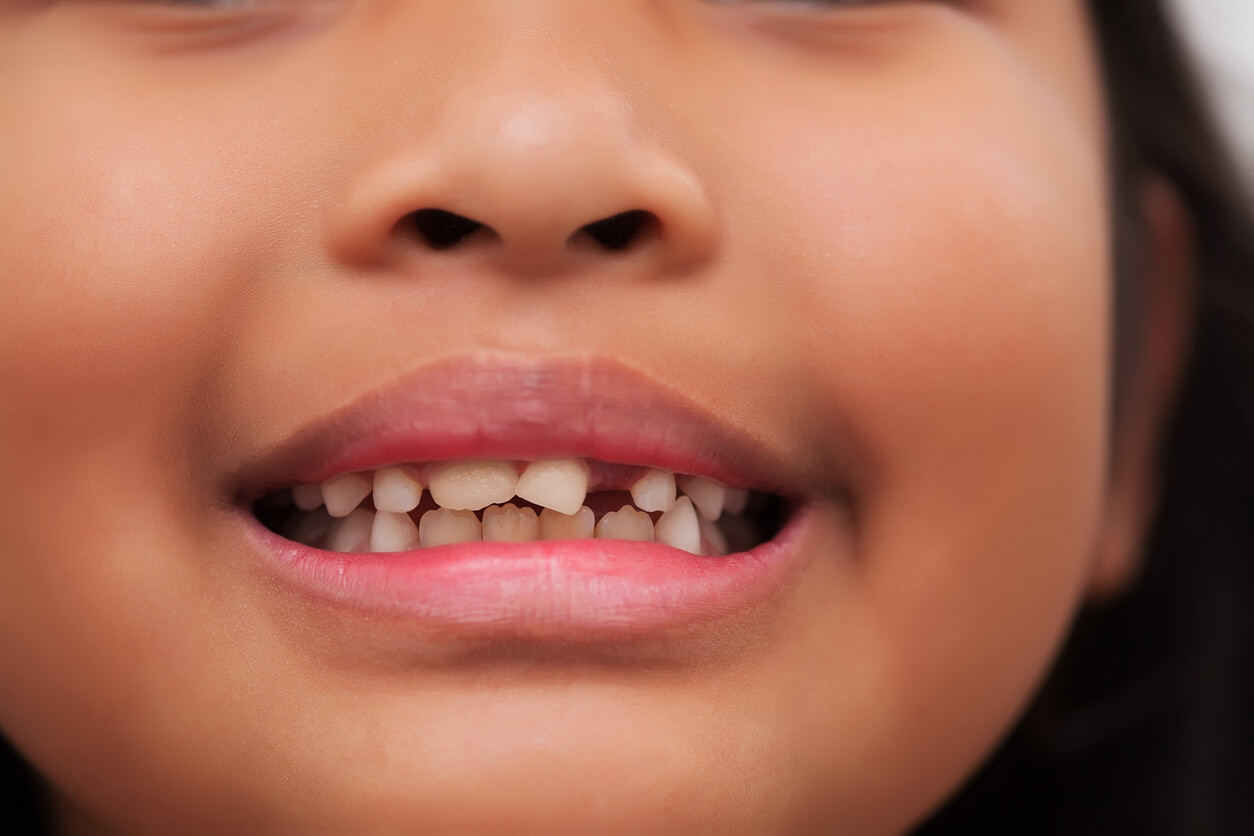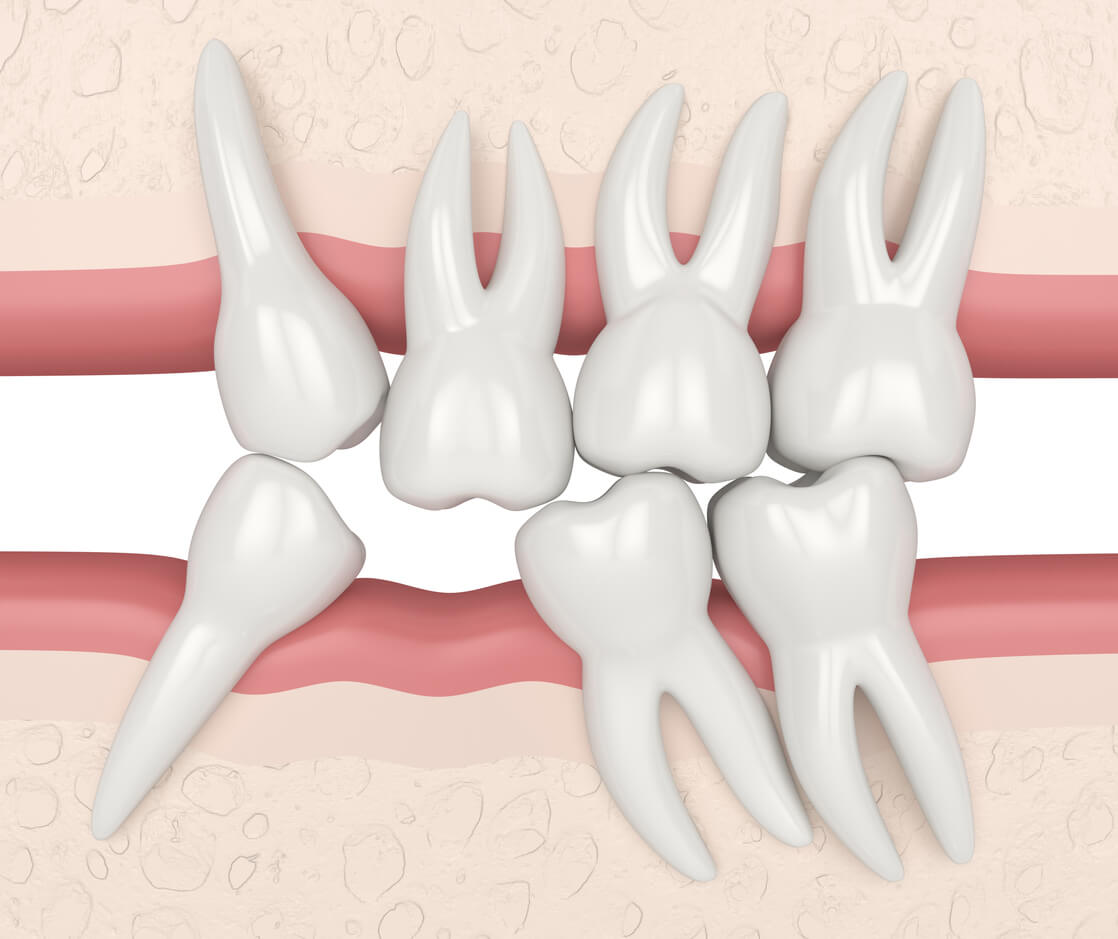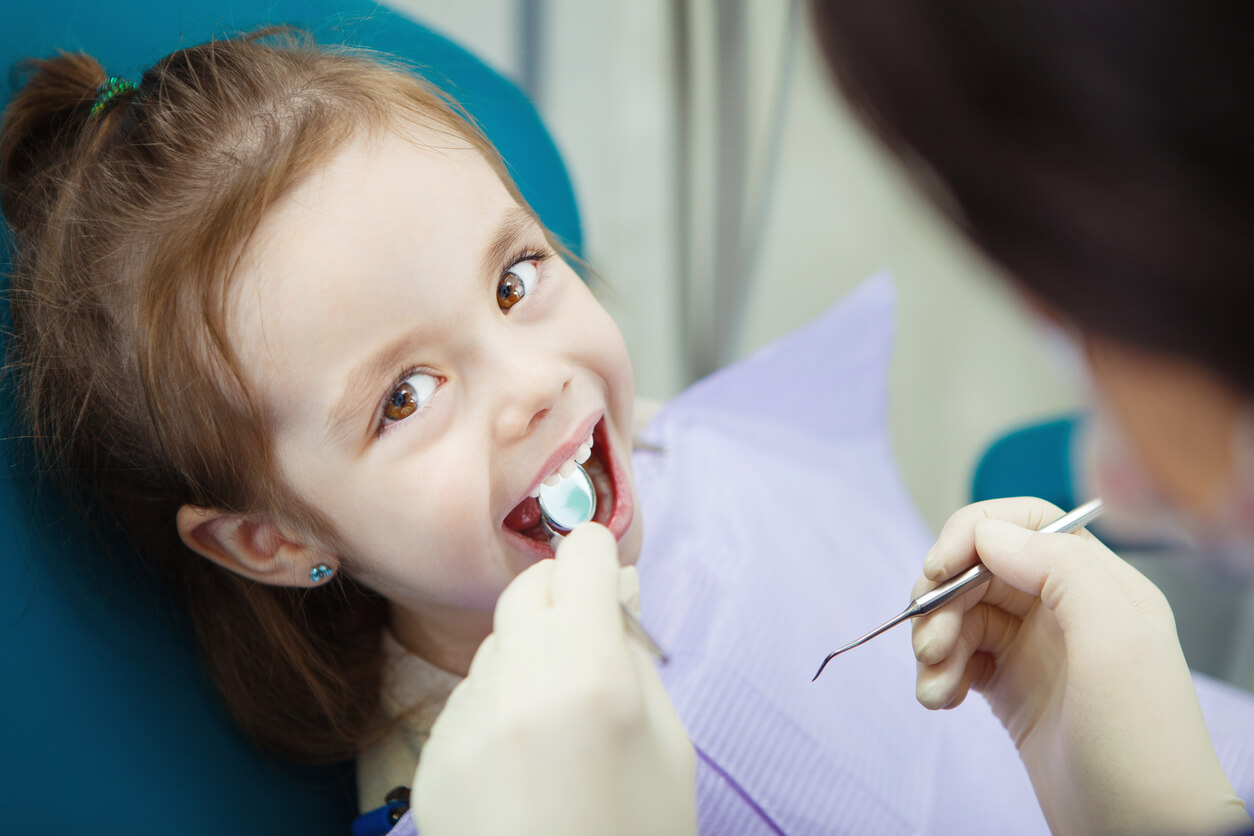What is Dental Agenesis and How Does It Affect Children?

Taking infants to the pediatric dentist as soon as their first teeth appear allows professionals, among other things, to detect any anomaly and oral malformation in time. Dental agenesis is one of the problems that a dentist can find during routine check-ups.
It’s fairly common for a child to lose a tooth and for there to be an empty hole waiting for the definitive one to come in. But there are abnormal situations that can lead to one or more missing teeth in the mouth.
This problem is what we know as dental agenesis and it affects both children and adults. In small children, it’s evidenced by the lack of a baby tooth in the mouth or by the lack of eruption of the permanent one when the temporary tooth falls out. Also, it can be due to the persistence of the primary tooth because there’s no definitive one that reabsorbs it.
What is dental agenesis in children?

Dental agenesis in children is the absence of one or more teeth due to lack of development. That is, the tooth or teeth never existed, so the denture is incomplete.
As we’ve already mentioned, this disorder can affect baby teeth and permanent teeth, but it’s more frequent in the latter. Wisdom teeth, lateral incisors, and premolars are the pieces that are most commonly missing.
The normal temporary dentition includes 20 baby tooth pieces that finish appearing around the age of 3. In the case of permanent teeth, there are a total of 32 elements, if we take into account the wisdom teeth that erupt between the ages of 17 and 21. In any case, before the eruption of the last molars, children usually present 28 permanent elements in their dental arches around the age of 13.
If at the expected ages, a tooth is missing in the mouth of children, we could be facing a case of dental agenesis. Although it’s always necessary to consider the pace of individual growth and development, which can often explain the delay.
It’s worth clarifying that the lack of the dental element in the child’s mouth isn’t due to its loss due to cavities or trauma. Nor to the fact that it’s retained inside the bone. In dental agenesis, the piece in question doesn’t exist at all, because it has never been formed.
The types of dental agenesis in children
Dental agenesis in children can be classified into different types, depending on the number of elements affected. Let’s take a look at this in detail:
- Hypodontia: This is the most common. It’s the lack of between 1 and 6 dental pieces in isolation.
- Multiple agenesis or oligodontia: In this case, more than 6 dental elements are missing in the arch, and in addition, the pieces present in the mouth usually present malformations.
- Anodontia: This is the most serious type of dental agenesis that’s observed in children, as there’s a total absence of teeth in the mouth.
Dental agenesis in children can also be differentiated between unilateral or bilateral agenesis, depending on whether it occurs on one or both sides of the mouth.
Causes of dental agenesis in children
At the time when the teeth are in formation, several factors can negatively affect the process. Hereditary components are the most common determinants, so it’s not uncommon to observe the lack of one or more teeth in several members of the same family.
Chromosomal alterations and genetic syndromes are also the cause of dental agenesis in children. For example, Down syndrome, ectodermal dysplasia, cleft lip, and cleft palate.
The action of teratogenic agents during the first trimester of pregnancy is another possible cause. Certain diseases such as tuberculosis, syphilis, rubella, rickets, or malnutrition suffered during pregnancy can explain dental agenesis in children.
What consequences does this condition bring to children?

The lack of one or more teeth in the mouth of children alters the functionality, balance, and aesthetics of the oral cavity. Each dental element occupies a place and fulfills a specific role in the arch.
Therefore, dental agenesis in children can affect several issues that influence the development of little ones. Below, we’ll discuss them in detail:
- Aesthetic effects: The presence of one or more gaps in the smile affects the child’s appearance. This can bring some feelings of shame, low self-esteem, and difficulties in social development and interpersonal relationships.
- Functional problems: The spaces left by the lack of teeth alter the functions of the mouth. The pronunciation of certain phonemes and chewing difficulties are some of the problems that can appear when there are fewer teeth in a child’s mouth.
- Dental malpositions: The dental elements present in the mouth also suffer repercussions due to the absence of the other pieces. The teeth neighboring the empty space are inclined to occupy this place. And the antagonist can erupt too much, looking for a contact that they can’t find. All these unusual movements cause crooked teeth and malocclusions.
How to solve dental agenesis in children?
In order to solve the problems caused by dental agenesis in children, it’s essential to have an accurate diagnosis of the problem. And the sooner the problem is detected, the fewer consequences there will be.
For this reason, taking your child for regular dental check-ups is key. You need to start with the controls from the first year of life so that the pediatric dentist can monitor the entire eruptive process and detect any abnormality in time.
In clinical examinations, the dentist can diagnose the absence of a tooth, but only through X-rays can they confirm whether or not the cause is dental agenesis.
In the case of dental agenesis, the approach and treatment will depend on the age of the child, the affected dentition, and the number of missing teeth. Likewise, it will also depend on the facial physiognomy of the child, the size of the teeth present in the mouth, and the presence of associated bite problems.
A therapeutic option consists of closing the space created by the lack of the tooth through the use of orthodontics. With the device, the rest of the dental elements are mobilized and aligned until the gap is annulled.
After this, it’s usually necessary to carve and restore the teeth, to give them the shape that corresponds to the space they occupy. For example, orthodontically advanced canines can become lateral incisors.
Another alternative is to save the space to place an implant or a prosthesis when the child grows. For this, a professional will need to place a space maintainer that preserves the spot and prevents neighboring pieces from moving in.
In the event that baby teeth persist due to the absence of the definitive element, it’s best to keep them. The application of preventive measures, such as sealants and fluoride, helps to prolong their stay in good condition.

When to consult a pediatric dentist?
As we already told you, regular dental check-ups are key to detecting dental agenesis in children early on. The professional follow-up of the dental eruption helps to find any alteration in time.
Likewise, if you notice any of these conditions, it’s advisable to consult a pediatric dentist:
- Your child is already 3 years old, but they still don’t have their 20 baby teeth in their mouth.
- At the expected age, the baby tooth doesn’t move.
- The definitive element doesn’t appear after the temporary element has fallen.
These situations aren’t decisive in themselves, as each child has their own growth rate and tooth eruption. But it’s worth investigating early, as these cases could indicate dental agenesis. Early diagnosis will allow you to choose the best treatment options for your little one.
All cited sources were thoroughly reviewed by our team to ensure their quality, reliability, currency, and validity. The bibliography of this article was considered reliable and of academic or scientific accuracy.
- Echeverri Escobar, J., Restrepo Perdomo, L. A., Vásquez Palacio, G., Pineda Trujillo, N., Isaza Guzmán, D. M., Manco Guzmán, H. A., & Marín Botero, M. L. (2013). Agenesia dental: Epidemiología, clínica y genética en pacientes antioqueños. Avances en Odontoestomatología, 29(3), 119-130.
- Oliva Ruiz, E. S. (2021). Asociación del tipo de agenesia del incisivo lateral superior con la percepción estética de la sonrisa en pacientes atendidos en la Clínica Estomatológica del Adulto de la Universidad Inca Garcilaso de la Vega.
- Díaz-Pérez, R., & Echaverry-Navarrete, R. A. (2009). Agenesia en dentición permanente. Revista de Salud Pública, 11, 961-969.
- Lloret García, M. (2016). Influencia de la agenesia dental en el desarrollo de la dentición.
- Mocha Medina, L. M. (2021). Agenesia en dentición permanente (Bachelor’s thesis, Universidad de Guayaquil. Facultad Piloto de Odontología).
- Flores-Carrillo, C. L., Santiesteban-Ponciano, F. A., & Gutiérrez-Rojo, J. F. (2020). Tratamiento de ortodoncia en paciente con agenesia de incisivos laterales superiores. Revista Tamé, 7(21), 842-847.
- Loor Alvarado, F. A. (2021). Estado actual de la agenesia en dentición permanente (Bachelor’s thesis, Universidad de Guayaquil. Facultad Piloto de Odontología).
- Bryan, J., & Arias, T. (2021). Efecto de la Hipodoncia en relación a su origen congénito. revisión bibliográfica (Bachelor’s thesis, Universidad Nacional de Chimborazo).
- Berumen-Torres, Y., Murisi-Pedroza, I., González-Zarazua, C., Alcalá-Sánchez, J., & Guzmán-Uribe, D. Agenesia múltiple de dientes permanentes en paciente pediátrico: Reporte de un caso clínico. Mis casos Clínicos de Odontopediatría y Ortodoncia, 119.
This text is provided for informational purposes only and does not replace consultation with a professional. If in doubt, consult your specialist.








